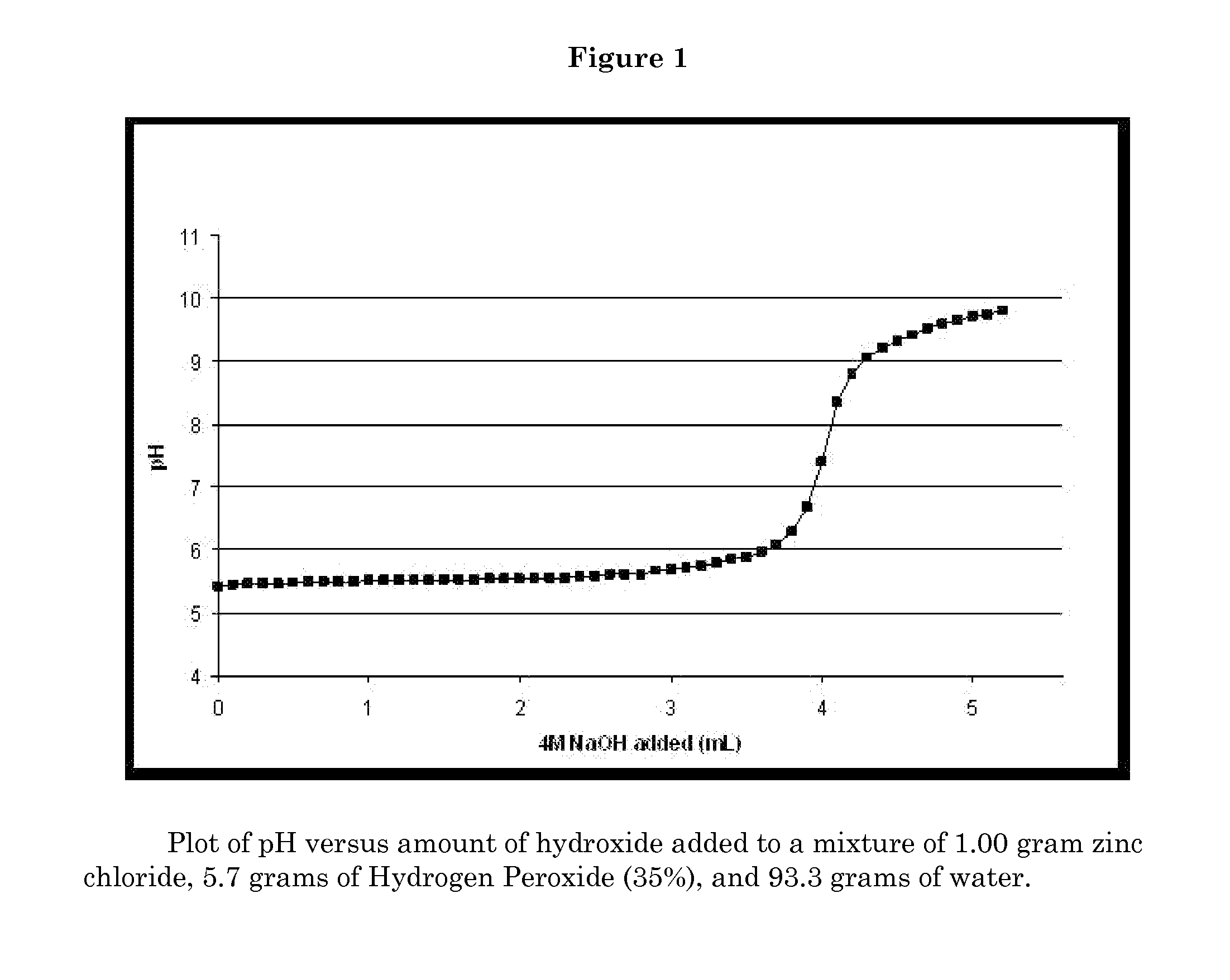Antimicrobial Textiles Comprising Peroxide
- Summary
- Abstract
- Description
- Claims
- Application Information
AI Technical Summary
Benefits of technology
Problems solved by technology
Method used
Image
Examples
example 1
Pilot-Scale Antimicrobial Textile Production Using a Solution of Zinc, Acetate, Chloride, Acetic Acid, and Hydrogen Peroxide, at Low pH
example 2
Pilot-Scale Antimicrobial Textile Production Using a Solution of Zinc Chloride, and Hydrogen Peroxide, with Addition of Hydroxide (No Acetate)
[0113]The materials, equipment and methods of Example 1 were followed, with the exception that the treatment solutions were of an improved composition, and other details noted below. The treatment formulation did not contain acetate or acetic acid, and the pH was adjusted to 7.5 using sodium hydroxide. The actual treatment compositions used are given in Table 2.1.
TABLE 2.1Hydro-Compo-SodiumZincgenAceticAcralubenent:AcetateChloridePeroxideAcidCPWater(1)Purity of100.00%100.00%50.00%56.00%100.00%100.00%FeedstockRun 3— 1.76% 4.71%— 2.47% 91.06%(high conc.)Run 4— 0.88% 2.35%— 2.47% 94.29%(low conc.)(1)includes water contained in NaOH solution used for pH adjustment
[0114]The treatment formulations were prepared by adding zinc chloride into water (noting an exotherm), and adding hydrogen peroxide into the aqueous solution of zinc chloride. The pH...
example 3
Pilot-Scale Antimicrobial Textile Production Using a Mixture of Zinc Chloride, Zinc Nitrate, Hydrogen Peroxide, Sodium Hydroxide, EDTA, and Sodium Stearate
[0121]The materials, equipment and methods of Example 1 were followed, with the exception that the treatment formulation were of an improved composition, and other details as noted below. The treatment formulation did not contain acetate or acetic acid. The actual amount of each reagent added to prepare the treatment formulation used is given in Table 3.1, and the balance of the composition was distilled water. Reagents, except for softener, were combined and then homogenized in a large commercial blender for approximately 5-10 minutes. Each blender batch of approximately 3.5 gallons was passed through a nylon mesh screen with a 200 micron pore opening, and several batches were then combined to obtain the final working volume of approximately 20 gallons of treatment formulation. The required amount of softener was then added. Wet ...
PUM
 Login to View More
Login to View More Abstract
Description
Claims
Application Information
 Login to View More
Login to View More - R&D
- Intellectual Property
- Life Sciences
- Materials
- Tech Scout
- Unparalleled Data Quality
- Higher Quality Content
- 60% Fewer Hallucinations
Browse by: Latest US Patents, China's latest patents, Technical Efficacy Thesaurus, Application Domain, Technology Topic, Popular Technical Reports.
© 2025 PatSnap. All rights reserved.Legal|Privacy policy|Modern Slavery Act Transparency Statement|Sitemap|About US| Contact US: help@patsnap.com

